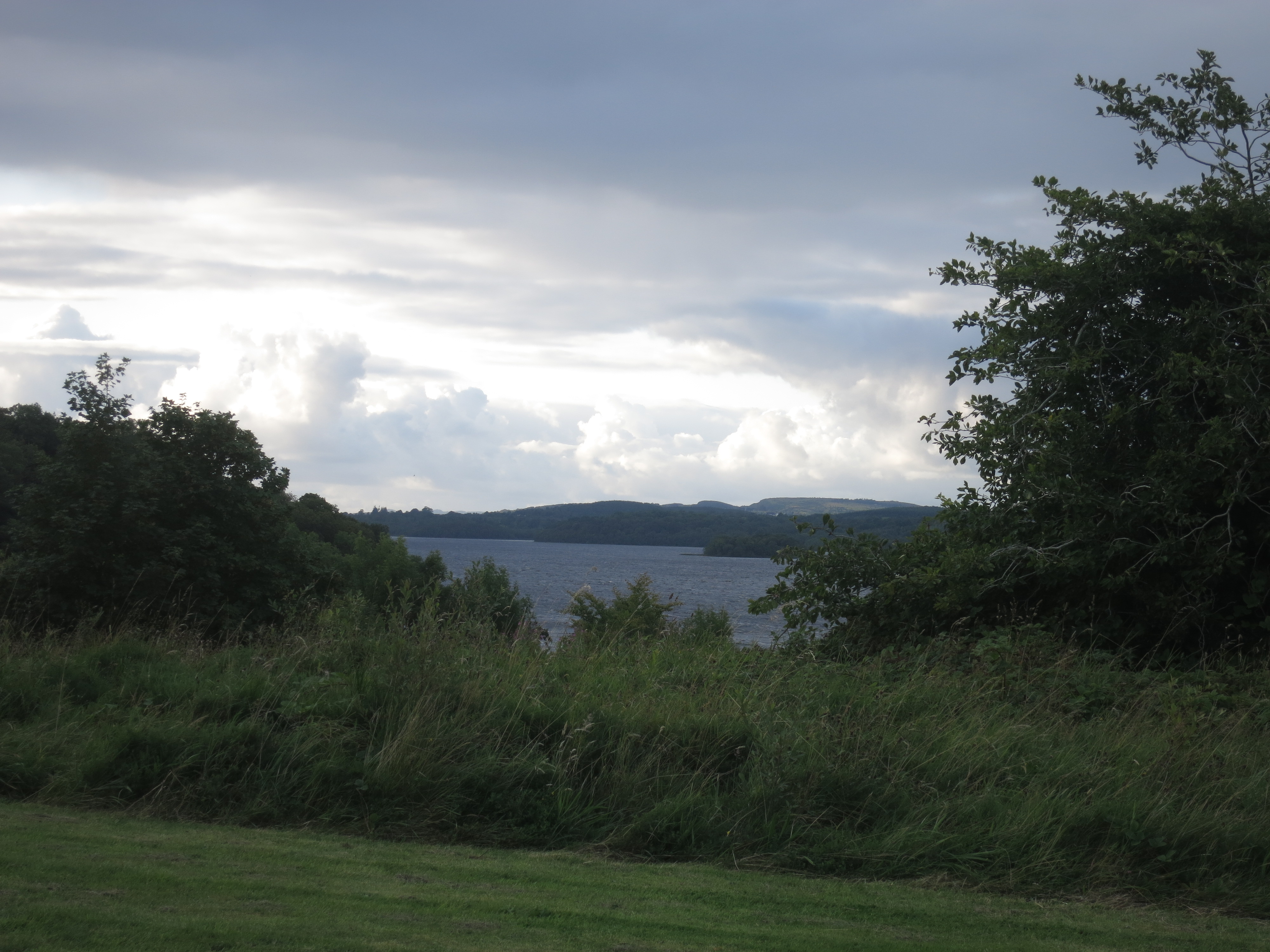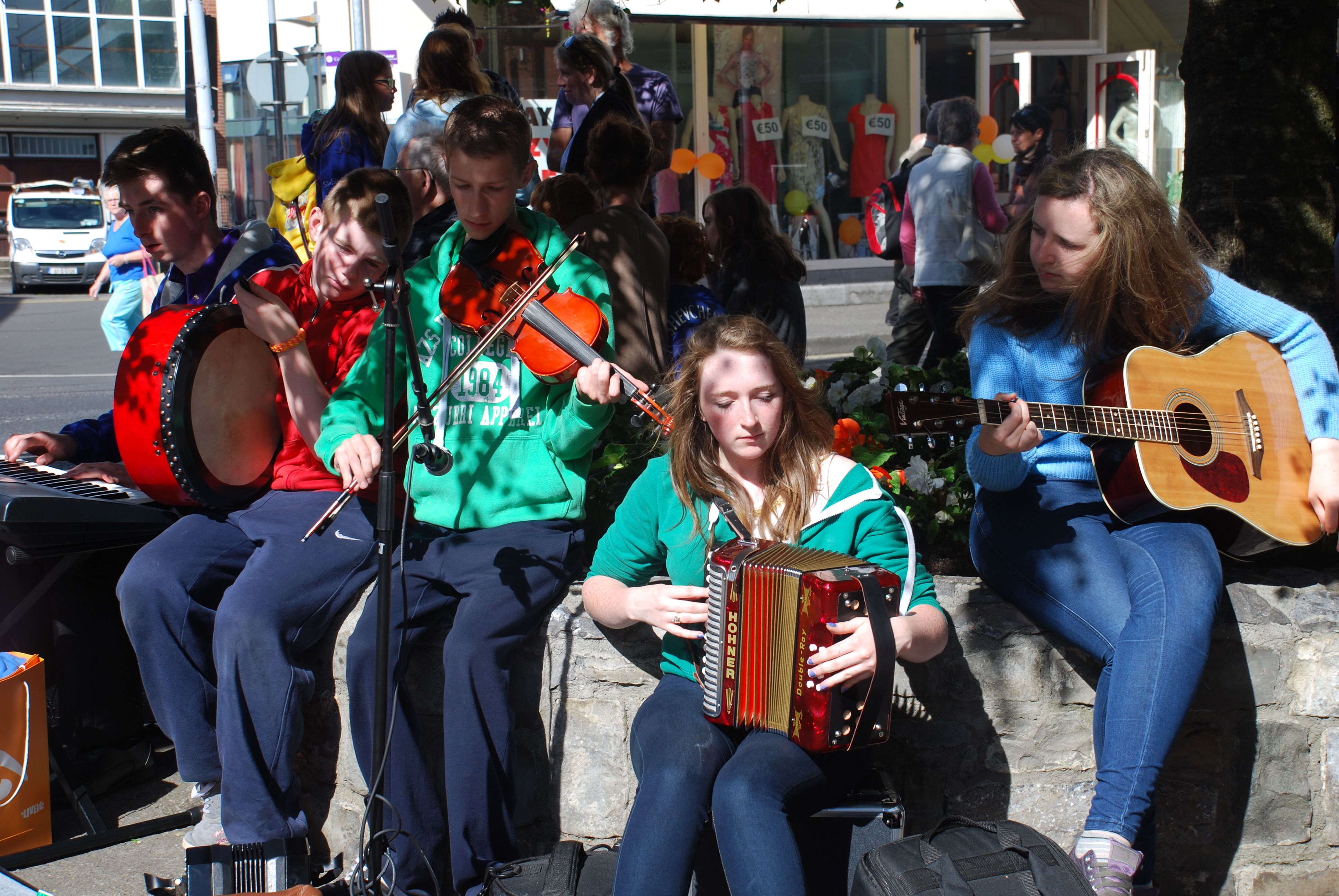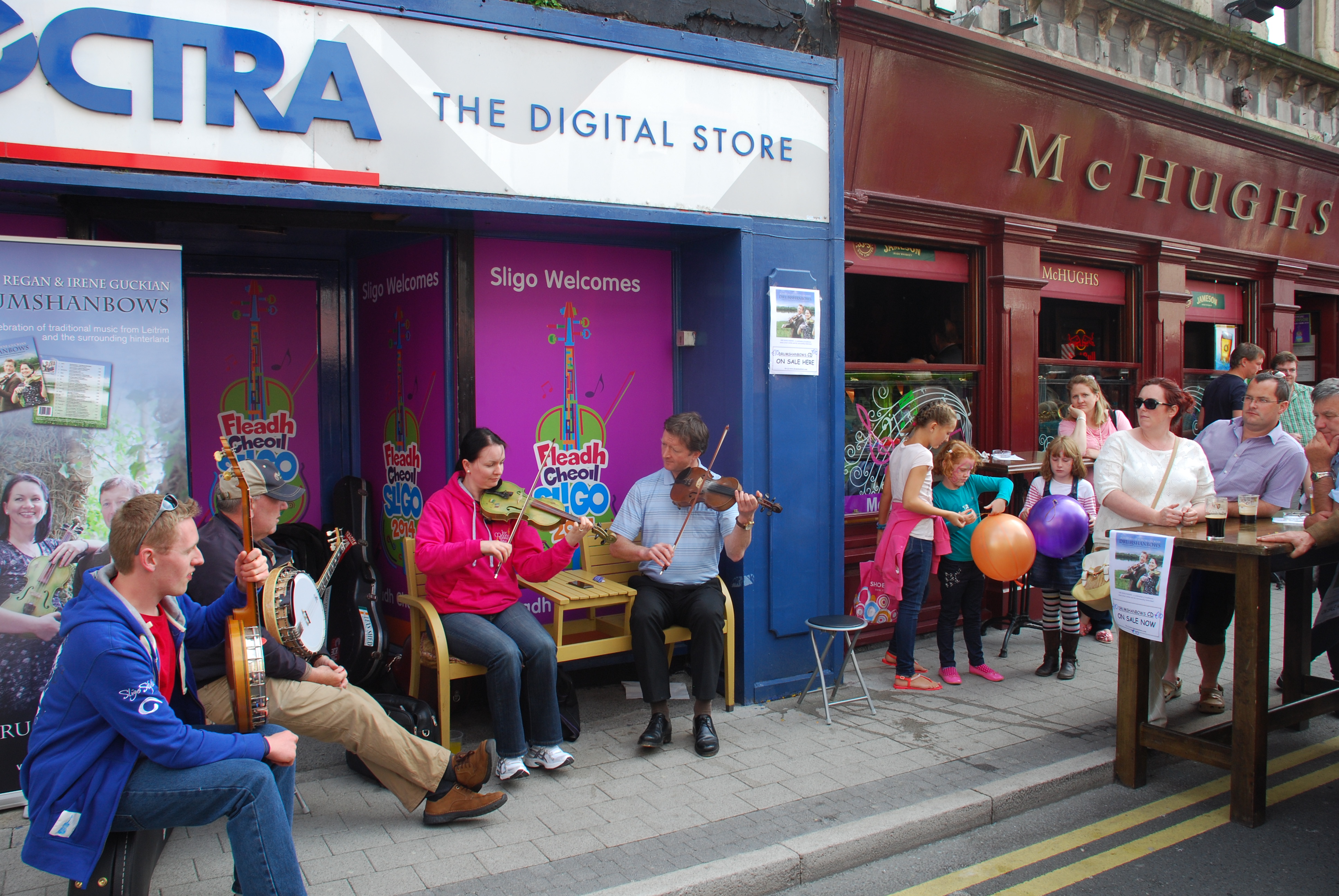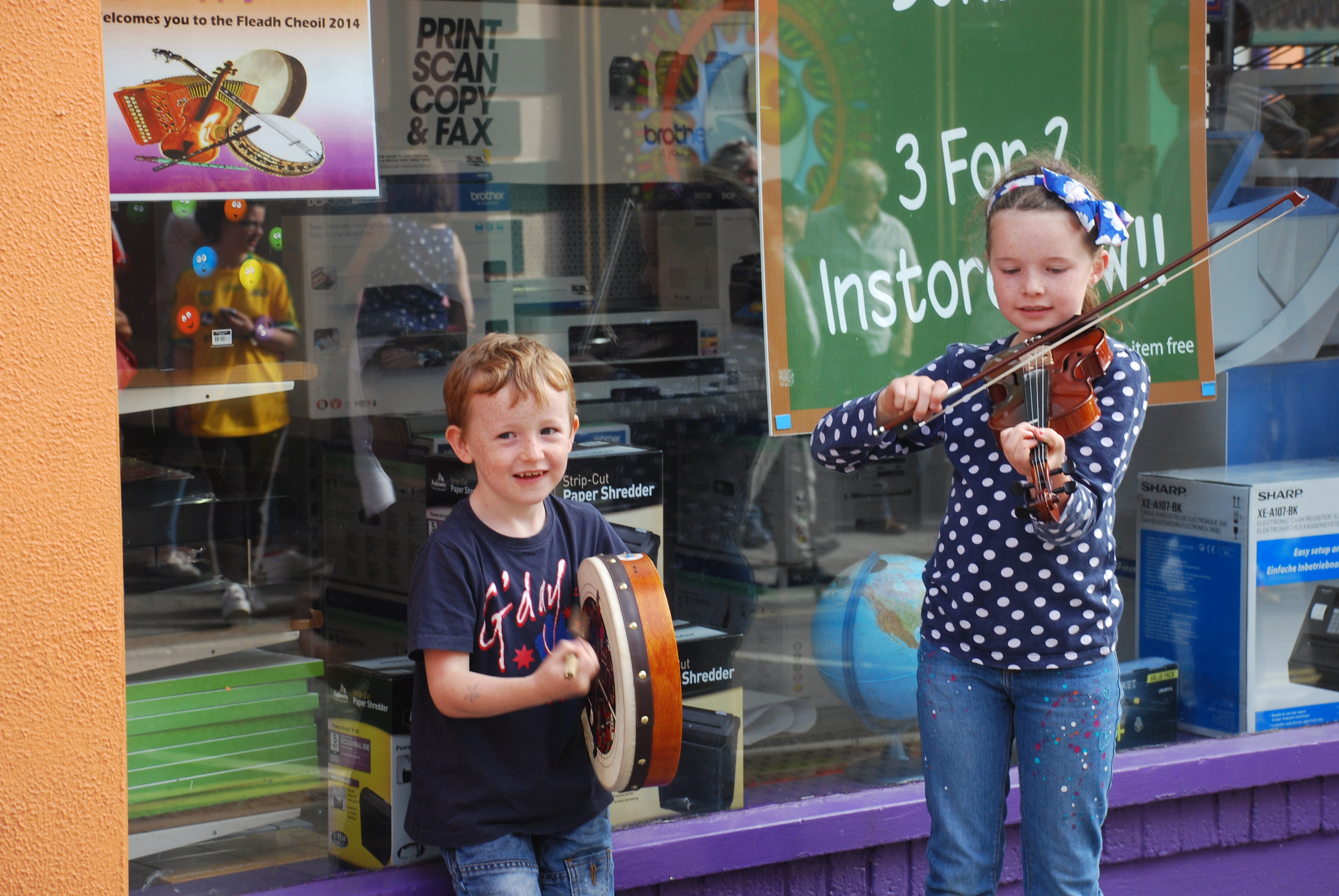
After arriving back in Ireland, we headed west, aiming for Sligo and the the Fleadh (Fleadh Cheoil na hÉireann to give it its full name), stopping off in Boyle for a night on the way to visit an aunt of Niamh's and collect turf for them.
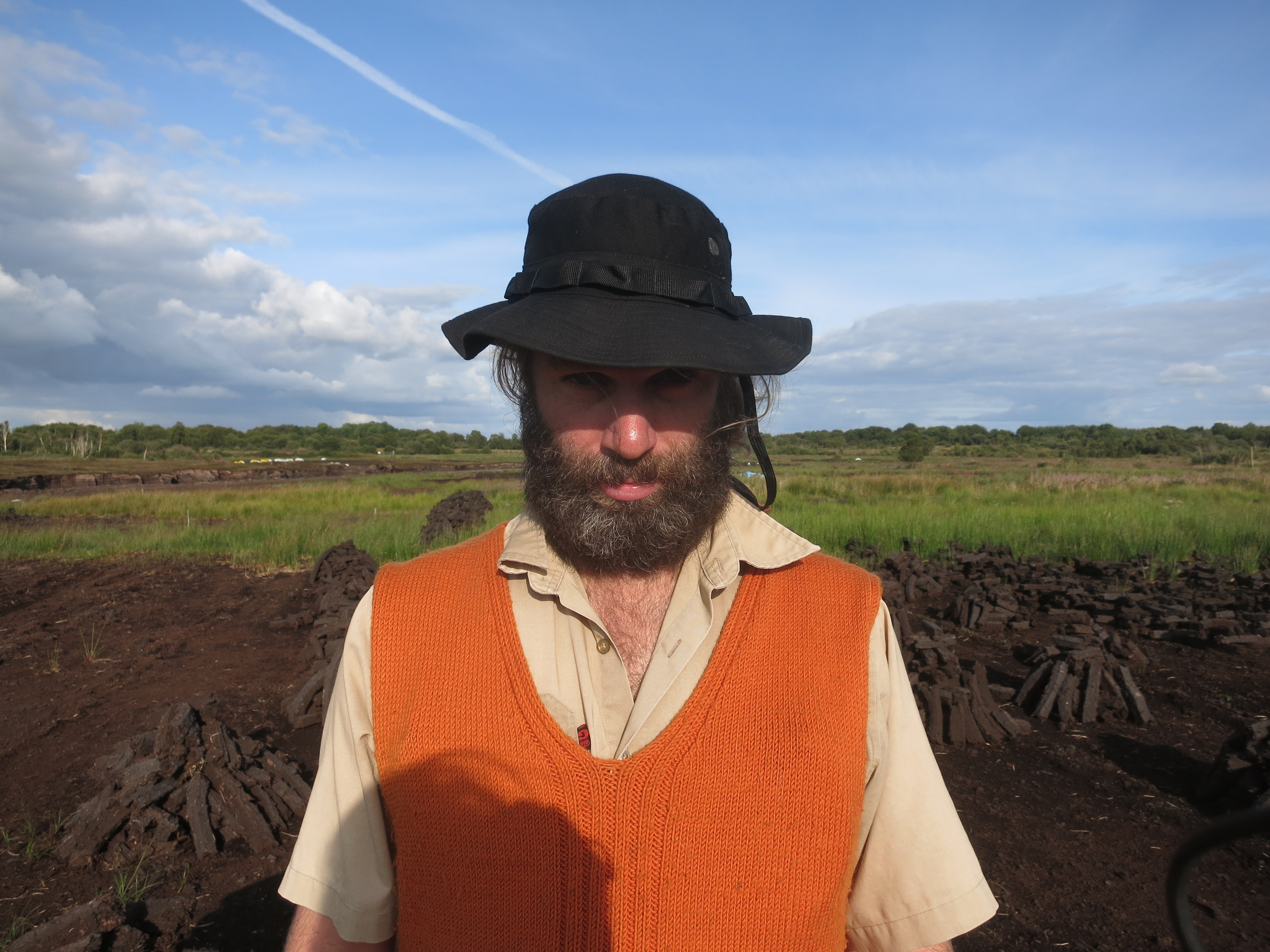
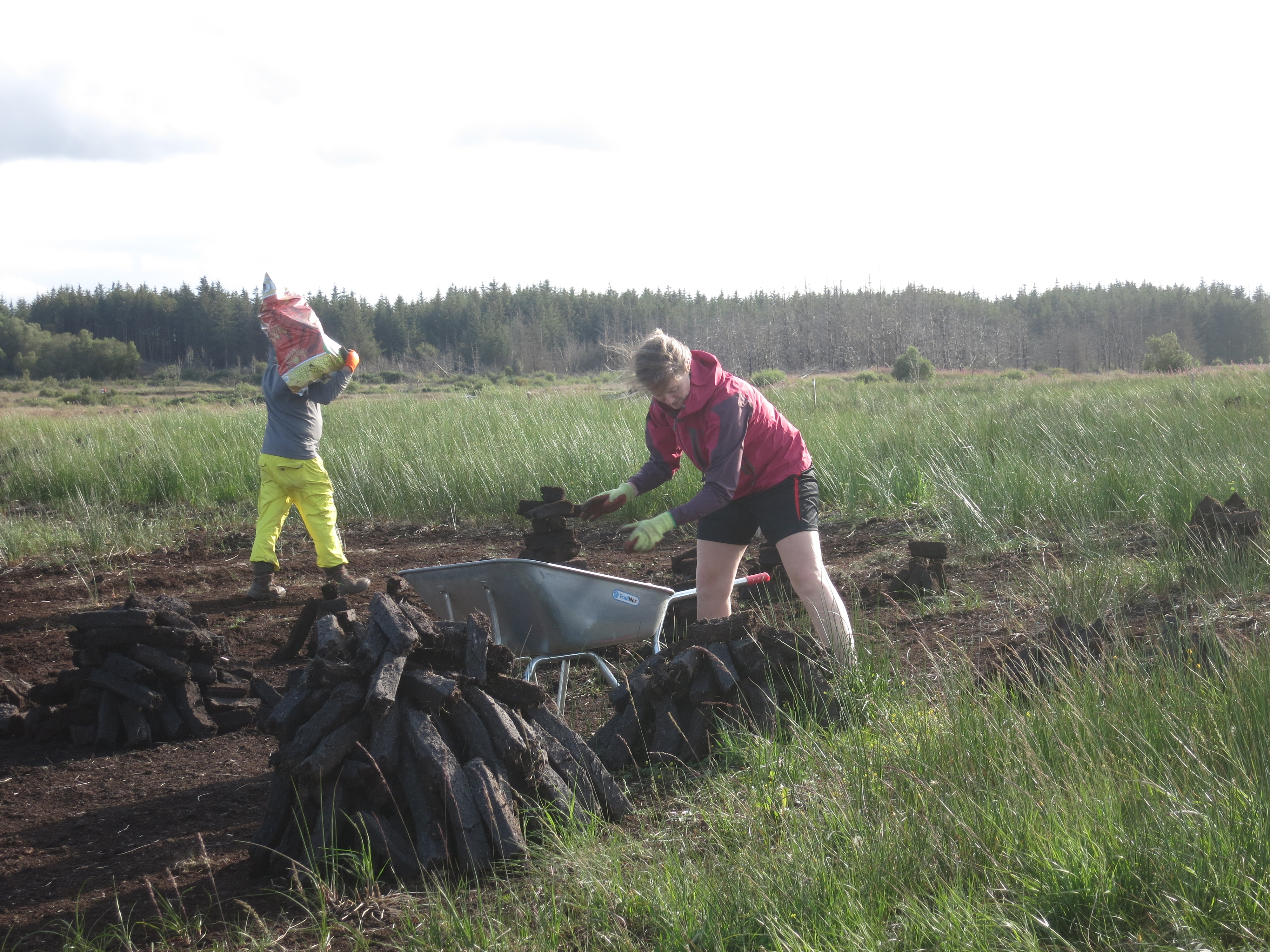
We also had a nice walk around the Lough Key, a local lake, through the forest and were fed lovely food by Niamh's aunt, who also happens to be a chef!
Lough Key. The last photo taken with my camera before it succumbed to the infamous Canon lens error problem. Now seemingly indefinitely interred for repairs.
The next day she came with us to Sligo, where we spent three nights at another aunt's house and were swamped with Irish music!
There's a bit of a stereotype that in Irish pubs people fairly regularly get together in a corner and play traditional music – and it's true! And at the Fleadh (pronounced 'flah') it's a thousand times as true!

One part of the Fleadh is a nationwide traditional music and dance competition with dozens upon dozens of categories and, if you can believe what you're told in a noisy pub, that there are about 25 000 competitors! Sligo itself has about 30 000 inhabitants, so there's almost one competitor for each resident! Add to that the 100 000 other visitors (or was that 200 000?) and the town is a lot busier than usual! The festival officially goes for seven days, the start being more the early rounds of competitions, later on more concerts and people just playing for fun.
The other part of the Fleadh is just lots of people playing sessions in pubs and busking on the streets, as well as a few concert stages, all of which is free. There are also paid gigs, but there was so much going on out and about that we didn't even look at the paid stuff. All through the streets, crowded with pedestrians, were buskers, in many places every 10 or 15 metres, playing really good music; and in the very numerous pubs and pop-up bars were yet more people playing music. I really got the feeling that in Ireland 'traditional' or 'folk' music is truly alive, proud and unselfconsciously vibrant. It's not the preserve of revivalists or the older generation, everyone is playing, dancing, listening and getting into it, including the many kids busking, even little three-piece outfits under five years old!
The streets of Sligo during the Fleadh
In addition to that, of course, are the many accents of Ireland, all charming in their surprising diversity. In the spirit of scientific discovery I spent a night with an audio recorder asking anyone willing to speak in their own accent – at some time in the future I'll edit it and post it here for your enjoyment!
Unfortunately we didn't have time to see much of the spectacular country all around, large bald hills surrounding the town and a wild Atlantic coast on one side. We did, however, make one small trip for lunch just out of town, at Strandhill, on a day of ruthless wind, occasional rain and the odd bit of sun, so it qualified as 'a roasting day'. It was also there that I heard another of those hilarious sayings the Irish seem to talented at: (pointing to a local hill) “If you can see the hill, it's about to rain. If you can't, it's raining”.
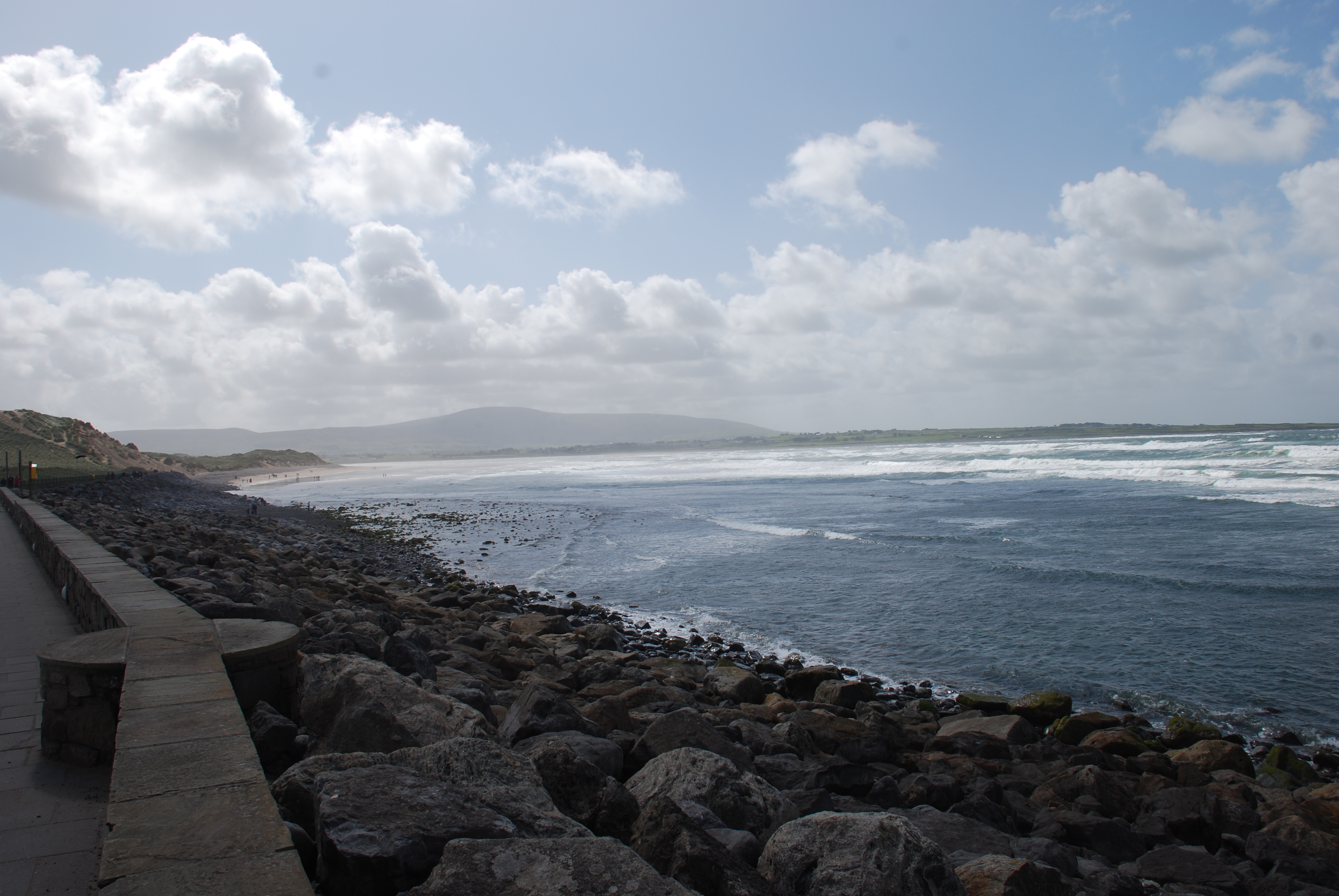
After Sligo we sleepily got the train back to Dublin for a day or two then I headed back to Europe and Niamh flew over to New York to visit a good mate.
